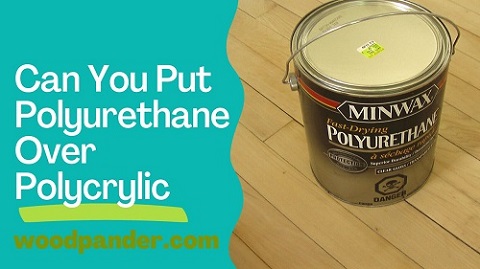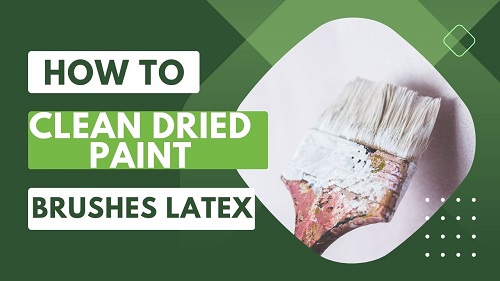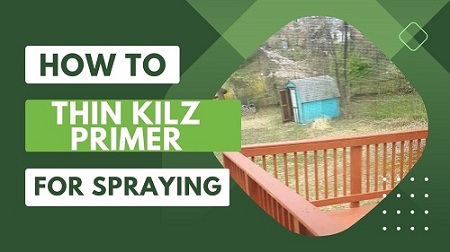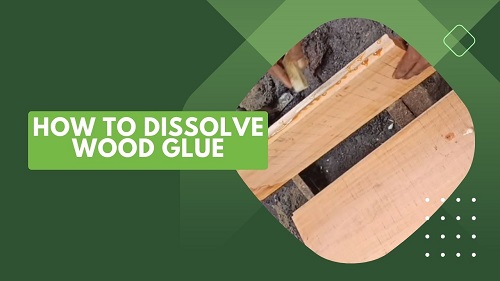Polycrylic is a notoriously tricky finish to work with. Furthermore, they can be challenging to remove. Even if we are successful in removing it, there may be some complications. For example, the wood can be damaged sometimes.
So, how to remove Polycrylic finish properly?
Well, you could sand them off. But it would be a lot of effort. Acetone and other similar solvents work well on most finishes too. But on Polycrylic they don’t work well. On the other hand, Chemical strippers are incredibly effective in removing Polycrylic. But you have to use the water or soy-based remover to do so.
Do you want to know how it all works? That’s why we’ve described each step down for you to complete the process.
| Method | Description | Advantages | Disadvantages |
|---|---|---|---|
| Sanding | Using sandpaper or a sanding block to sand off the polycrylic finish from the surface. | Can be effective for small areas or minor touch-ups. Provides control over the removal process. | Requires manual effort and time. May create dust and debris. May not be suitable for large areas or intricate details. |
| Chemical Stripper | Applying a chemical stripper specifically designed for removing finishes, including polycrylic, to the surface and then scraping off the softened finish. | Can be effective for larger areas or intricate details. Can remove multiple layers of finish. | Requires proper ventilation and safety precautions. May require multiple applications and scraping. Some chemical strippers may have strong odors or harsh chemicals. |
| Heat Stripping | Using a heat gun or infrared paint remover to heat the polycrylic finish and then scraping it off with a scraper or putty knife. | Can be effective for larger areas or multiple layers of finish. Can work well on curved or contoured surfaces. | Requires proper ventilation and safety precautions. Can potentially damage the underlying surface if not done carefully. Heat guns can be hot and pose a burn risk. |
| Paint Remover | Using a paint remover or paint stripper that is compatible with polycrylic finish to dissolve the finish, and then wiping or rinsing it away. | Can be effective for small areas or minor touch-ups. Can provide control over the removal process. | Requires proper ventilation and safety precautions. May require multiple applications and wiping. Some paint removers may have strong odors or harsh chemicals. |
| Sandblasting | Using a sandblasting machine to blast abrasive particles at the surface to remove the polycrylic finish. | Can be effective for large areas or heavy-duty stripping. Provides uniform and fast removal. | Requires specialized equipment and training. Can potentially damage the underlying surface if not done carefully. Generates dust and debris that requires proper containment and cleanup. |
Let’s get started-
Table of Contents
- Which Method Is The Best For Removing Polycrylic?
- How To Remove Polycrylic Finish with Water-based Stripper?
Which Method Is The Best For Removing Polycrylic?
Various kinds of finishes are used on wooden coasters. But you’ll see that polycrylic is the best one.
Removing the Polycrylic finish is an easy process. But you need to pick the best technique. That’s why we’ve compared some of the common ways to remove polycrylic finish-
Sanding
The most conventional technique of removing finishes from any wood surface is sanding. It’s a method for removing any finishing.
It is possible to remove Polycrylic with sanding. However, it comes with a slew of restrictions. In this situation, sandpaper with a grit of 200 to 320 is required. But it will take a long time.
So, a lot of your precious energy will be needed to complete this procedure. Furthermore, sanding improperly can damage your wood surface.
Solvent
Now, let’s talk about solvents. Polycrylic can’t be entirely removed with them. It doesn’t matter how long you wipe the solvent over it. Plus it’s possible that rubbing it too hard may harm the wood’s surface.
Chemical Stripper
We believe chemical strippers are the best in this. Other finishers are not typically removed in this manner. But it is a preferred method for removing Polycrylic. They’re also not that harmful to the wood if you pick the right stripper.
Now, which is the appropriate stripper to remove polycrylic?
Well, let’s start with which one you shouldn’t use. Chemical paint removers that have Methylene chloride are strictly forbidden.
Methylene chloride is a caustic, corrosive substance found in almost all chemical strippers. If it gets into touch with our eyes or skin, it may cause severe harm. The gas created from this should not be breathed since it may harm our respiratory system. Furthermore, it is not ecologically friendly.
However, chemical strippers have evolved with time. Some contemporary versions may be found. You should go ahead and purchase the water-based or soy-based chemical strippers! But remember, with these, you have to work for a bit longer. But hey! Better be safe than late, right?
How To Remove Polycrylic Finish with Water-based Stripper?
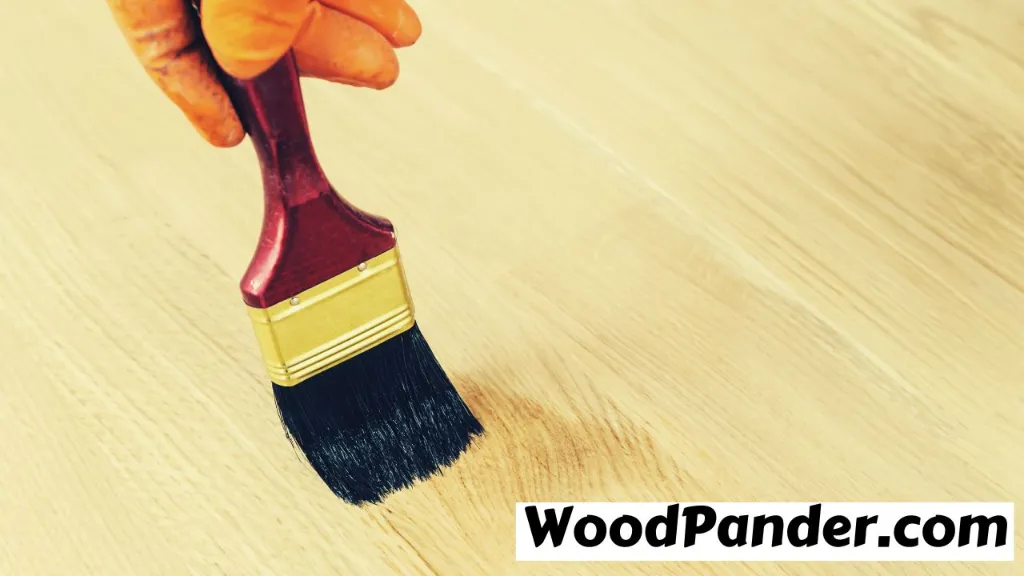
So, in this section, we’ll walk you through the whole procedure step by step. Also, you don’t have to calculate anything here like when you do to know how much wood 1 ton of coal equals.
So, without worrying too much, let’s keep reading-
Necessary Materials
- Mask
- Goggles
- Rubber gloves
- Lab coat
- Steel wool
- Scraper
- Paint stripper (water-based or soy-based)
- Brush/Spray applicator
- Waxed paper state (optional)
It’s time to go to work after you’ve collected all of your things.
Step-1: Set Up Your Workspace
Make sure you pick a well-ventilated space. The space should be light and airy.
Turn on the fan before you begin. Make sure the room temperature isn’t too hot or too chilly. Avoid sitting in direct sunlight. Also, don’t work in the basement.
Then you should also avoid leaving any stains. For that, put a cloth beneath the furniture and start removing Polycrylic.
Step-2: Apply the Remover
To coat the remover, you can use a brush or a spray bottle. However, apply it to a tiny portion of the wood’s surface. This way you’ll be able to see if it’s either good or bad for the wood.
Wait for 5 minutes. If nothing bad happens, you can carry on.
Also, be sure you use a high-quality spray applicator or bottle. Are you unsure what to look for? Here are a few of our favorites when it comes to spray bottles-
| Product 1 | |
| Product 2 |
Just get the spray bottles and pour the stripper in it.
Allow the solvent to sit for 15 minutes. If the room isn’t well ventilated, you can cover the wood surface with waxed paper.
Step-3 Scrape Off Polycrylic
Scrape off the Polycrylic gently using the scraper’s side blade. Scrape until the whole coating of Polycrylic has been removed from the wood surface. Place the layers that have been removed in a disposable bag or cloth.
If there is any remaining Polycrylic to be removed, reapply the remover.
Scrape Polycrylic out of the fine cracks. Remove as much Polycrylic from the surface. After all of the Polycrylic has been removed, sand the surface. Make sure to use the best sandpaper for this job.
Note: Between each application of the stripper, be careful not to sand. That way you’ll be just damaging the wood surface.
Step-4: Dispose of Chemical Stripper in a Safe Way
Chemical strippers are also very flammable. So, soak all of the disposables in a pail of water to get rid of them.
That’s it! This is how you remove polycrylic!
Related Questions
Question: Is it possible to remove Polycrylic using acetone?
Answer: Yes, it’s possible to remove Polycrylic using acetone. However, acetone falls short of chemical strippers in terms of effectiveness. Plus acetone may leave stains on wood surfaces.
Question: Is it possible to remove Polycrylic by just rubbing?
Answer: Yes, you may be able to do that. But you need to wet sand and rub out the polycrylic. Use water and wet or dry sandpaper that’s made with silicone carbide. You can also use synthetic microfiber cloth or pad to do that job.
Question: Is it possible to remove polycrylic with vinegar?
Answer: To answer your question, yes, vinegar will aid in the removal of polycrylic. However, you have to mix it with water. A 1:1 water and vinegar solution should be applied to remove the polycrylic.
Question: What is polycrylic finish?
Answer: Polycrylic finish is a water-based protective coating that is commonly used on wood surfaces to provide a clear, durable, and protective layer.
Question: Why would I need to remove a polycrylic finish?
Answer: There are a few reasons why you might need to remove a polycrylic finish. For example, if the finish has become damaged, discolored, or worn over time, you may want to remove it and apply a new coat. Alternatively, you may want to remove the finish if you’re planning to refinish the wood surface entirely.
Question: How do I know if I have a polycrylic finish?
Answer: If you’re not sure whether a particular wood surface has been coated with polycrylic finish, you can perform a simple test. Dab a small amount of acetone or nail polish remover on an inconspicuous area of the surface. If the finish softens or dissolves, it is likely a polycrylic finish.
Question: What tools and materials do I need to remove a polycrylic finish?
Answer: To remove a polycrylic finish, you will need a few basic tools and materials, including sandpaper, a paint scraper, a putty knife, mineral spirits, and a clean cloth.
Question: What is the process for removing a polycrylic finish?
Answer: The process for removing a polycrylic finish will depend on the specific situation and the tools and materials you have available. Generally, the process involves sanding the surface to remove the top layer of the finish, using a scraper or putty knife to remove any remaining layers, and then cleaning the surface with mineral spirits to remove any remaining residue.
Question: Are there any safety precautions I should take when removing a polycrylic finish?
Answer: Yes, it is important to take safety precautions when removing a polycrylic finish. This may include wearing protective gloves and eyewear, working in a well-ventilated area, and avoiding inhaling any fumes or dust particles.
Question: Can I use a chemical stripper to remove a polycrylic finish?
Answer: Yes, you can use a chemical stripper to remove a polycrylic finish, but it’s important to follow the manufacturer’s instructions carefully and take all necessary safety precautions.
Question: Can I remove a polycrylic finish without damaging the wood underneath?
Answer: Yes, it is possible to remove a polycrylic finish without damaging the wood underneath, but it requires care and attention to detail. It’s important to avoid using excessive force or pressure when sanding or scraping the surface and to work slowly and methodically to avoid causing any damage.
Conclusion
Now you should have a thorough understanding of how to remove Polycrylic finish. As a result, you may be even more obstinate!
Just remember to keep yourself safe during the procedure. Good luck!


